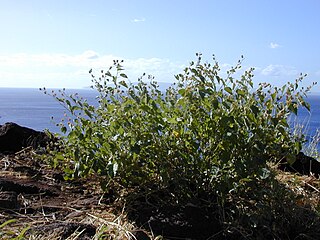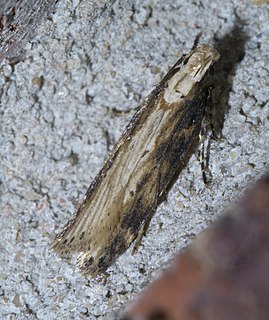| Chionodes mariona | |
|---|---|
| Scientific classification | |
| Kingdom: | |
| Phylum: | |
| Class: | |
| Order: | |
| Family: | |
| Genus: | |
| Species: | C. mariona |
| Binomial name | |
| Chionodes mariona (Heinrich, 1921) | |
| Synonyms | |
| |
Chionodes mariona is a moth in the family Gelechiidae. [1] It is found in North America, where it has been recorded from Arizona, southern Texas and Mexico. [2] [3]

Moths comprise a group of insects related to butterflies, belonging to the order Lepidoptera. Most lepidopterans are moths, and there are thought to be approximately 160,000 species of moth, many of which have yet to be described. Most species of moth are nocturnal, but there are also crepuscular and diurnal species.

The Gelechiidae are a family of moths commonly referred to as twirler moths or gelechiid moths. They are the namesake family of the huge and little-studied superfamily Gelechioidea, and the family's taxonomy has been subject to considerable dispute. These are generally very small moths with narrow, fringed wings. The larvae of most species feed internally on various parts of their host plants, sometimes causing galls. Douglas-fir (Pseudotsuga) is a host plant common to many species of the family, particularly of the genus Chionodes, which as a result is more diverse in North America than usual for Gelechioidea.

North America is a continent entirely within the Northern Hemisphere and almost all within the Western Hemisphere. It is also considered by some to be a northern subcontinent of the Americas. It is bordered to the north by the Arctic Ocean, to the east by the Atlantic Ocean, to the west and south by the Pacific Ocean, and to the southeast by South America and the Caribbean Sea.
The wingspan is 9–10 mm. The forewings are glossy black with two conspicuous cream-colored spots. The first one has the form of a short triangular dash on the outer third of the costa, while the other is an irregular spot of about the same size on the dorsum just beyond the middle. The hindwings are smoky fuscous. [4]

The wingspan of a bird or an airplane is the distance from one wingtip to the other wingtip. For example, the Boeing 777-200 has a wingspan of 60.93 metres, and a wandering albatross caught in 1965 had a wingspan of 3.63 metres, the official record for a living bird. The term wingspan, more technically extent, is also used for other winged animals such as pterosaurs, bats, insects, etc., and other fixed-wing aircraft such as ornithopters. In humans, the term wingspan also refers to the arm span, which is distance between the length from one end of an individual's arms to the other when raised parallel to the ground at shoulder height at a 90º angle. Former professional basketball player Manute Bol stands at 7 ft 7 in (2.31 m) and owns one of the largest wingspans at 8 ft 6 in (2.59 m).
The larvae feed on Abutilon incanum , Abutilon berlandieri , Malvastrum (including Malvastrum coromandelianum ), Sida and Wissadula species. Full-grown larvae reach a length of 6.5–7 mm. They have a yellowish white body with a subdorsal and a lateral longitudinal row of large red blotches and a longitudinal row of smaller red spots.

Abutilon icanum, also known as hoary abutilon, pelotazo, pelotazo chico, tronadora, and maʻo (Hawaiʻi), is a shrub widespread throughout the arid, warm regions of the southwestern United States and northern Mexico as well as Hawaiʻi.

Sida is a genus of flowering plants in the mallow family, Malvaceae. They are distributed in tropical and subtropical regions worldwide, especially in the Americas. Plants of the genus may be known generally as fanpetals or sidas.
Wissadula is a genus of flowering plants in the mallow family, Malvaceae. It contains 25 to 30 species of herbs and subshrubs that are mostly native to the neotropics, with several in tropical Asia and Africa. The name is derived from the Sinhala language.


